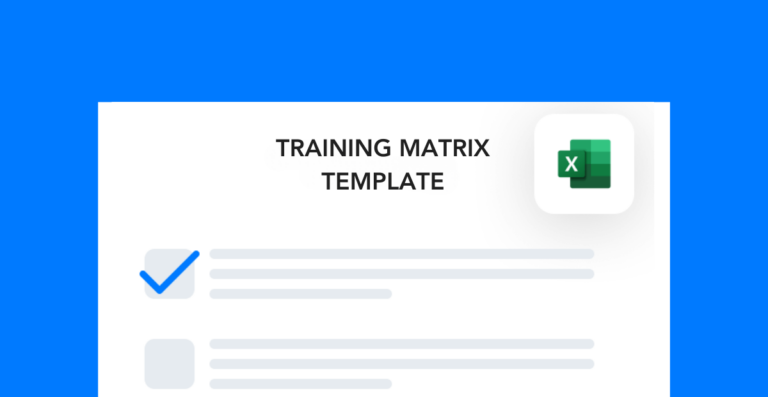How to make EHS classroom learning easier for everyone
Every EHS program should have a classroom learning component. That’s because workers always need training for site-specific processes and equipment.
But it’s no secret that the classroom can be stressful for both employees and the instructors themselves. Here are some strategies you can use to make the process easier for everyone involved.
Create and share an itinerary
Putting together a schedule for classroom learning is an easy way to reduce anxiety. It helps employees know what to expect so they can keep up. Creating an itinerary also helps you to organize your thoughts before you do a session. With a plan in place, you’ll be more likely to stay on track and leave room for unexpected problems if they arise.
Prepare materials ahead of time
Virtual EHS training allows employees to go at their own pace. The content is available up front for them to follow along with. But in a classroom setting, it’s up to the instructor to have all the training materials ready to go.
You can make the class easier for both you and your employees by preparing the materials ahead of time. Showing up without the right forms or files can interrupt your flow. Not to mention that it can confuse the students.
The best practice is to keep all your PowerPoints, quizzes, and forms organized digitally by course. That way, you can open the file for the course you’re about to do and everything you need is in one place.
Document training with LMS software
You can also take classroom learning to the next level by documenting everything within a learning management system (LMS). This is especially true if you already use an LMS to track remote training.
Recording training this way cuts down on the time you’ll spend filling out paperwork. Plus, it’ll make it easier to keep track of who’s past due on their compliance requirements.
Having a digital approach to documentation can also benefit your employees. It can simplify the process and ensure that everyone who attends your safety training gets credit for being there.
Simplify your message
Classroom learning can get tiring quickly if the instructor drones on and on about the topic. That’s why it’s so important to use your time wisely. The simpler your message, the more effective it will be.
Before you teach a class, write down the main points you need to get across. This list will be your anchor during the training and keep you from going too far off topic.
Having a more direct message also cuts down on the time it takes to complete a class without sacrificing the quality of the content. Plus, it leaves more room for questions, exercises, and demonstrations. Not only does it benefit the attendees, but it also helps you develop your communication skills as a training instructor.
Use real life examples
One advantage of the classroom over remote learning is that you can share real-life experiences and examples to teach the concepts. This is great for site-specific topics.
As you’re explaining the purpose of a safety rule or procedure, sharing an example of a related incident is a great way to make your message stick. Having an anecdote to connect to the topic makes it even more relevant and memorable.
Oftentimes, it’s hard for employees to grasp the potential impact of unsafe decisions just from the training process. By offering an example, it’s easier to show what happens when they don’t follow the safety guidelines.




